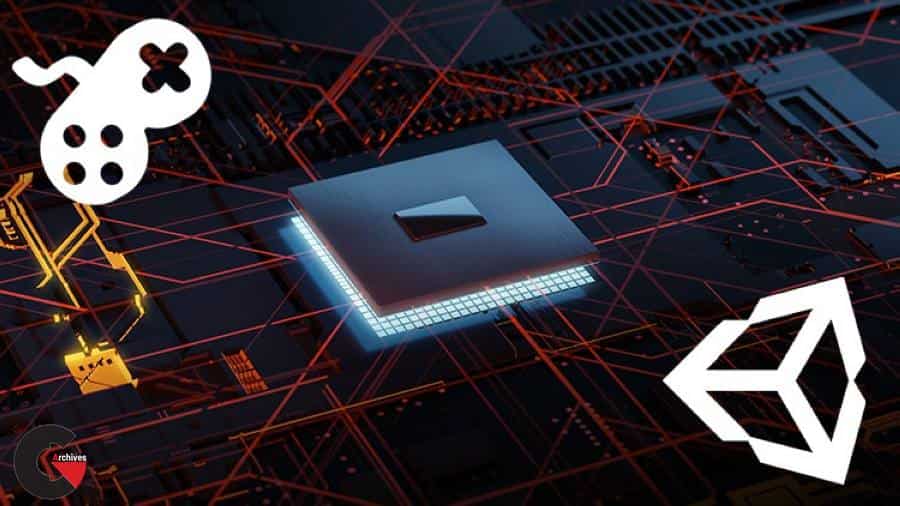

Learn to Write Unity Compute Shaders : By learning to create Compute Shaders, you will put yourself at the cutting edge of Unity development. Unlike a traditional shader, you can use a Compute Shader to handle any data manipulation problem, where having dozens (or even hundreds) of threads running simultaneously causing a bottleneck in your game to run many, many times faster. In this course you will start from small steps, learning the basics of compute shaders. First, we look at passing data from the CPU to the GPU using buffers. Then we’ll look at using these buffers in our calculations. Once you have this initial grounding, you learn how to use these techniques to create blisteringly-fast post-processing filters. You can use Compute Shaders to handle particle effects and flocking calculations. In the course, you’ll create a flock of thousands of birds where each bird flaps its wings in sync with its speed through the air. Divide and conquer is the way, with Compute Shaders. By using hundreds of threads running simultaneously, we develop a GPU Physics engine that can handle thousands of tumbling chess pieces. Compute Shaders are ideal for handling the orientation of grass blades as an avatar moves through grass. The challenging subject of fluids (both 2D and 3D) are covered in the course and you’ll see how much this computationally-intensive field benefits from Compute Shaders.
Requirements
- You must be familiar with the basics of Unity
- You need to have a basic knowledge of C#
The resources for the course are presented as a code-along version and a complete version and include over 30 different examples. Unity Compute Shaders provides the ideal platform to learn how to handle complex problems in your games. Flocking calculations using the 3 key rules of Separation, Cohesion, and Alignment are covered in detail. The physics calculations to handle fast collision detection and the forces involved are included (both theoretically and practically). Smoothed Particle Hydrodynamics is a technique for calculating fluid simulations. We’ll take you through it from the foundation level.
If you’re working with Unity, you need to understand how to use Compute Shaders to ensure your game has the best performance. After all, why let the GPU sit idle while the CPU is working overtime? You’ll see massive performance improvements if you switch some tasks to the GPU and handle them with a Compute Shader.
Who this course is for:
- Developers wanting to add compute shaders to their skill set
- Developers who wish to use the GPU to avoid processing bottle necks on games
- Developers curious to know modern techniques for flocking, gpu physics, grass, ray tracing and fluids
What you’ll learn
- How to write Unity Compute Shaders
- How to use ComputeShaders in post processing image filters
- How to use ComputeShaders for particle effects and flocking
- How use StructuredBuffers to share data between a ComputeShader and an instancing Surface Shader
- Using ComputeShaders to handle fluid simulations
- Using ComputeShaders to create a Physics engine
lB6MwSwNNIYYHz66UqInBRH/video%205/39877
Direct download links 3.5 GB :
Direct download link reserved for subscribers only This VIP
Dear user to download files, please subscribe to the VIP member
- To activate your special membership site, just go to this link and register and activate your own membership . >>>register and activate<<<
- You can subscribe to this link and take advantage of the many benefits of membership.
- Direct downloads links
- No ads No waiting
- Download without any limitation ، all content in website
CGArchives Is The Best
Review
Review
Review this tutorial